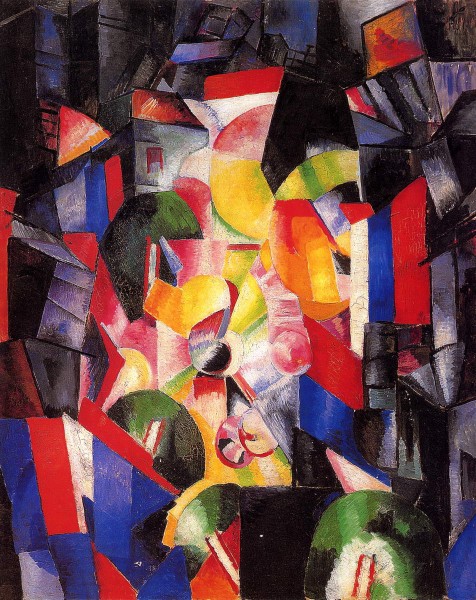City at Night
1913
- Period Late 19th century – Early 20th century
- CategoryAbstraction
- Share
Alexandra Exter’s career was filled with tireless searches and experiments, coinciding to a large extent with what many of her contemporaries were doing in art. Study in Paris and meetings with Pablo Picasso, Georges Braque, Guillaume Apollinaire, Filippo Tommaso Marinetti and Giovanni Papini on the one hand, and the obvious influence of Ukrainian folk art on the other, defined the Cubo-Futurist. Constructivist and colourist bases of her abstract works. Despite all the apparent chaos, Alexandra Exter's non-objective compositions and colour constructions are harsh and dynamic. They are precisely ordered and full of inner energy. The acute-angled planes seem to stand on end, cutting and slashing one another.
The rhythmic structure is supplemented by the sharp contrasts of the colourlit. Torn by internal contradiction, the energetic field of force represents a sort of infinity incalculable by mundane measures. Some special laws of equilibrium and harmony dominate here.

